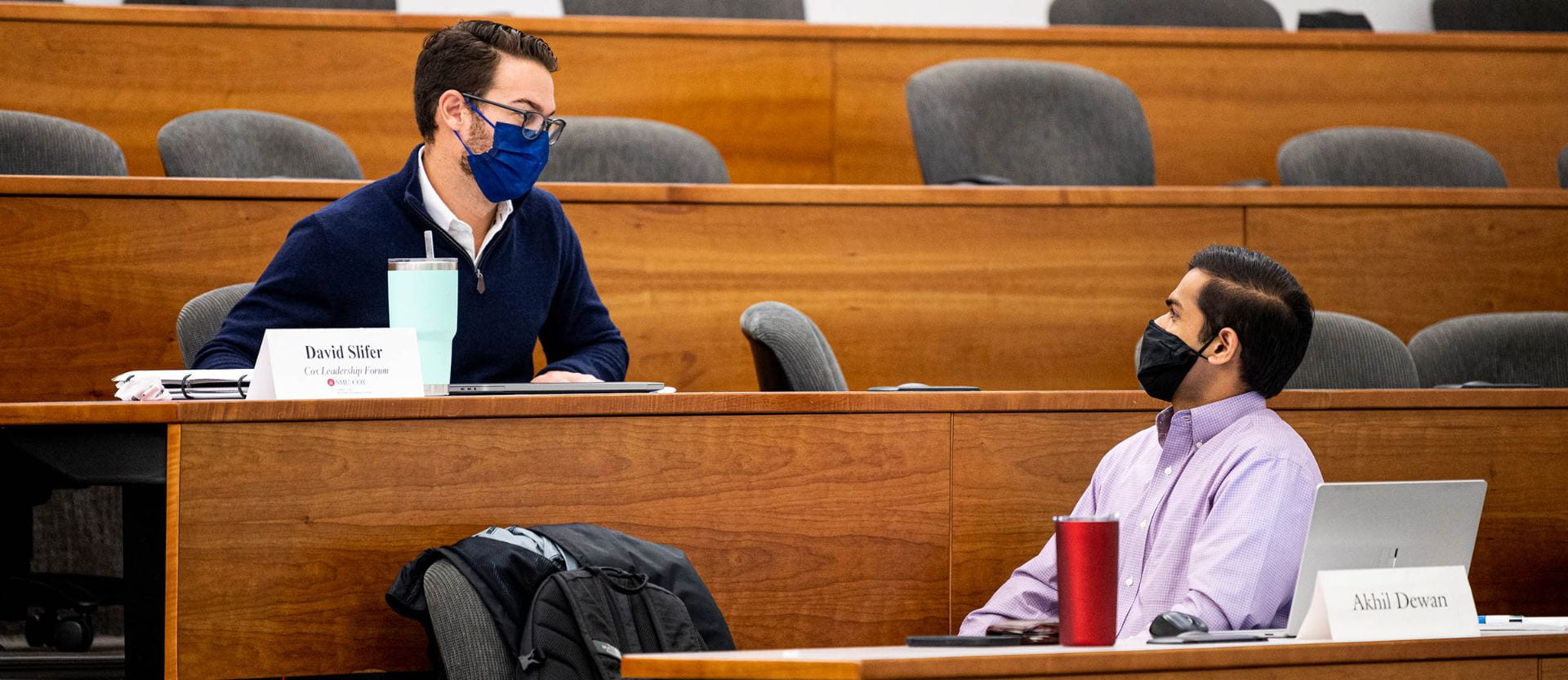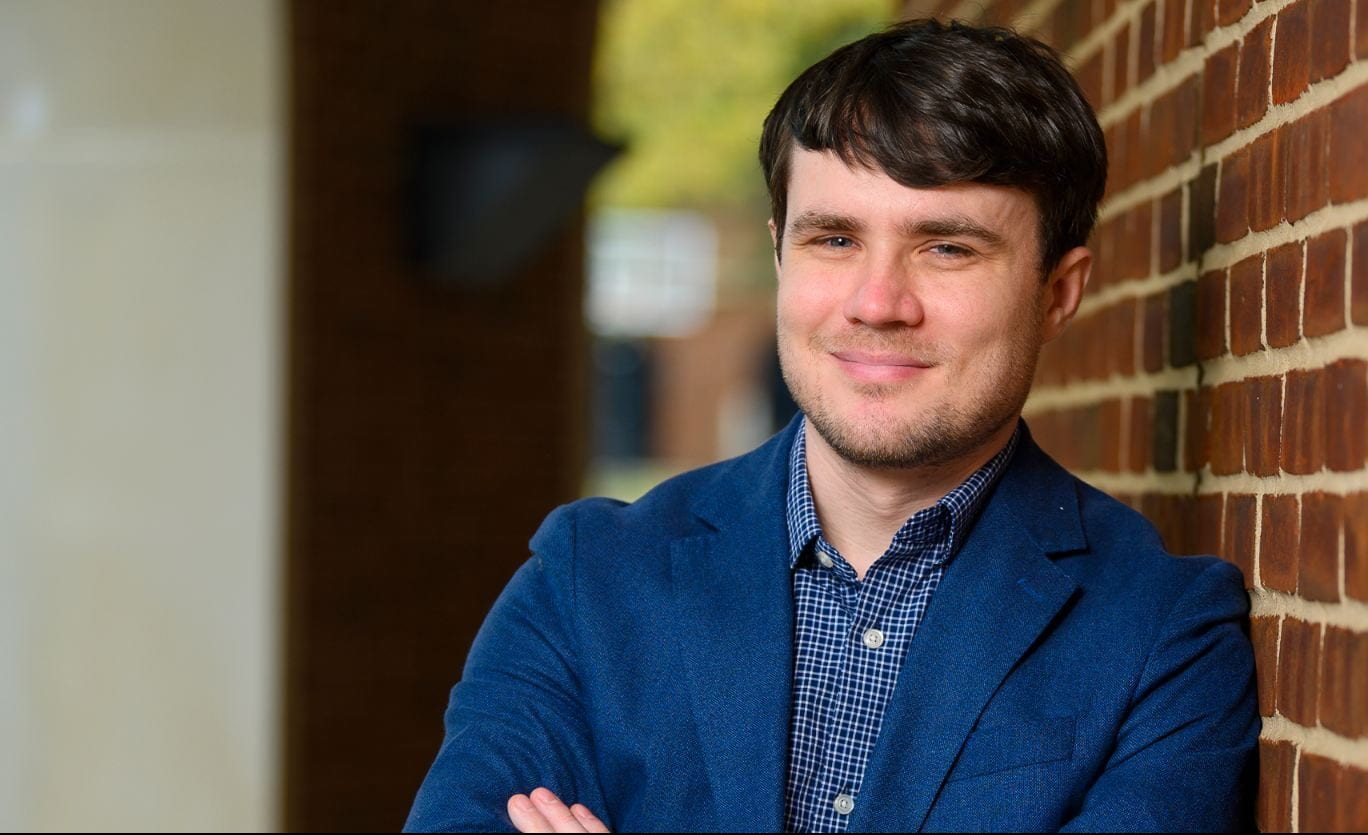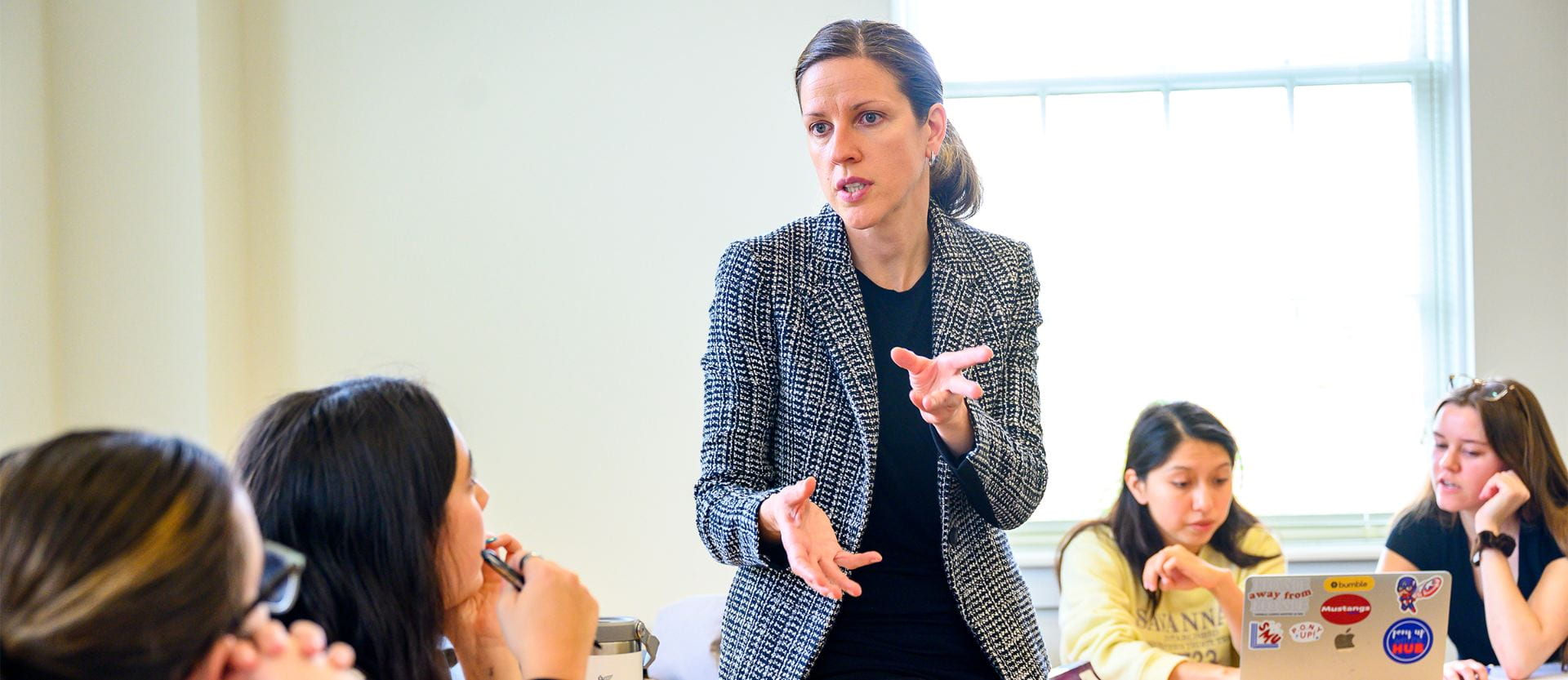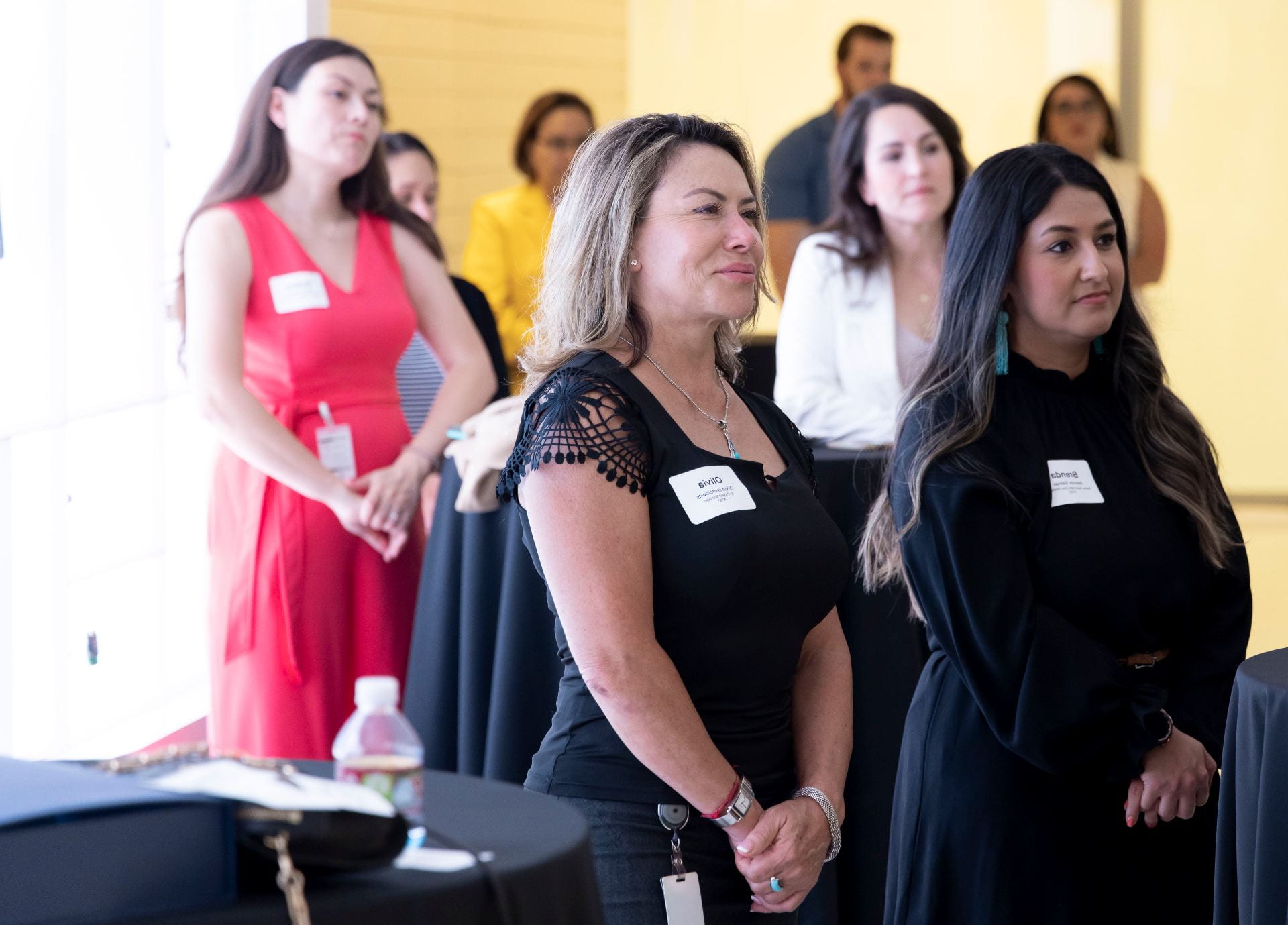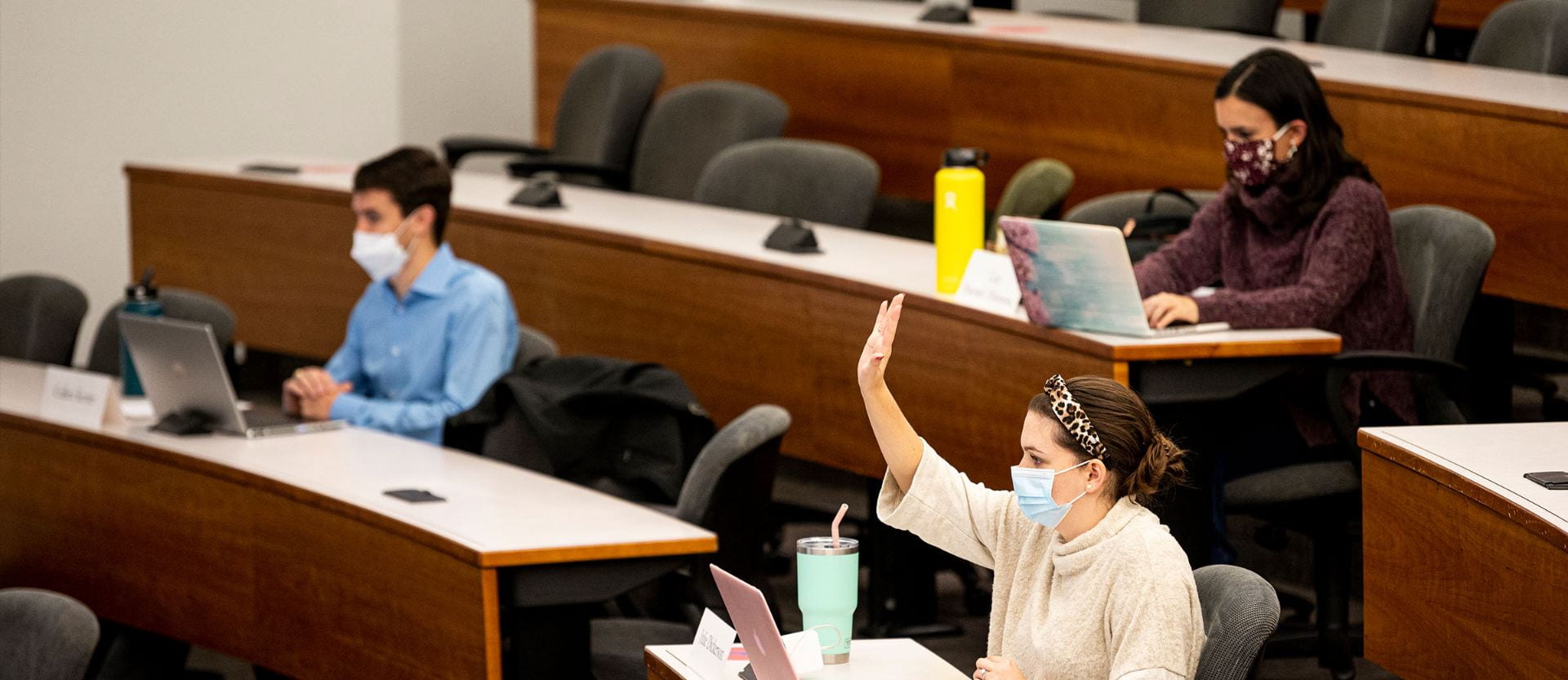Just weeks after the Cox 100 indoor picnic during which the Cox School of Business kicked off its celebration of the second 100 years of business education at SMU, the pandemic forced the University to reduce on-campus operations to a minimum. Over a 72-hour period, the Cox School quickly pivoted to online graduate instruction. As universities and schools across the country moved quickly in March to prevent COVID-19 from sweeping through their student bodies, all of them had to devise a new remote form of learning. Many business schools took the summer break to draw up a strategy for the fall semester — but not the Cox School, since several Cox graduate degree programs continue throughout the summer. Although Cox administrators did not have the opportunity to take a months-long break to formulate a learning model, Cox was in the fortunate position of being able to leverage the pedagogy and asynchronous assets developed in the Cox online MBA degree program.
At SMU Cox, students typically begin the Full-Time One-Year MBA Program in May, and Professional MBA evening classes continue throughout the summer. SMU and the Cox School needed to establish pandemic precautions while continuing to teach and uphold a high standard of pedagogy.
“We’ve been learning and adapting from the very beginning,” says Shane Goodwin, the Cox School’s associate dean of executive education and graduate programs and chairman of SMU Community Action Network (SMU CAN), an advisory group supporting SMU’s campus-wide COVID-19 communications. “The Cox School didn’t have a chance to sit around and draft a plan and say, ‘How are we going to attack this for the fall?’ This was really about the agility for us to adapt right from the very beginning and be constantly learning and willing to make adjustments. Our agility was greatly enhanced by our experience in delivering content in the Cox online MBA degree program.”
Prioritizing Health and Safety
SMU Cox had three conditions heading into the fall semester, Goodwin says: protecting the health and safety of its students, staff and faculty; maintaining its high standard of pedagogy; and allowing its graduate students to choose between in-person and virtual instruction. The School also faced three constraints: the size of rooms, which were reconfigured to allow for physical distancing; the availability of rooms, which held less than 50% capacity after reconfiguring; and the resources of faculty, who were working overtime to teach a larger number of smaller classes.
In response to the pandemic, the University devised the SMUFlex model, under which undergraduate students taking in-person classes in the fall semester were assigned to a red or blue team. One week, the red team attended class in person while the blue team attended online; the next week, they switched. But Cox did not adopt the SMUFlex model for its graduate students.
“We would not have satisfied the preference of our graduate students (typically enrolled in smaller classes than undergraduates) who really wanted to be in class all the time,” Goodwin says. “We said, ‘If you want to be in class, you’re going to be in class. You’ll have a seat; we’ll make sure of it. But if you’re going to be virtual, and you want to be virtual all the time, we’re always going to make sure we have a virtual option available.’ Ultimately, what we wanted to do was provide students a choice. What that really meant, though, is getting down to the individual level and basically moving people around body by body into certain classes at certain times to maintain social distance.”
Julie Maass, who leads Graduate Student Engagement and Success at Cox, was the architect to make certain the Cox School satisfied graduate students’ needs and preferences. Maass and her team worked diligently to come up with an ample number of classrooms and space within classrooms to ensure physical distancing of at least six feet between each student and their professors during classes. Students were informed of and reminded frequently about SMU mask requirements — essentially that masks were to be worn at all times in all shared spaces. SMU students, faculty and staff were asked to “Pledge to Protect” — commitments to follow strict SMU pandemic protocol.
To prepare for the fall, Cox faculty skipped their summer break and worked around the clock to create asynchronous content. The School brought in a film crew from Los Angeles and built out a production studio, where professors recorded asynchronous lectures. Professors also set up online tests and quizzes for students to work on during the week. This allowed them to use the classroom, either in-person or online, as a place to apply the contents of the asynchronous materials.
“We put the focus around health and safety,” Goodwin says. “Then we said, ‘Let’s think about pedagogy and then let’s ensure that the students have a choice of either modality, and let’s see if we can actually accomplish those confluence of objectives.’ And the reality is, we actually did that, and we did it very successfully.”
While safety measures and pedagogy were top of mind for many at the Cox School, admissions were also a priority. Both the graduate and undergraduate admissions teams continued aggressive efforts to secure strong entering classes for the fall. The Cox School outperformed many of its peer schools — not just meeting, but exceeding the School’s targeted admissions numbers for fall 2020.
Fostering Community
With the ongoing pandemic, the current student experience can be isolating. Community can be difficult to find, but it is essential to combatting the uncertainty and anxiety the pandemic can induce. With this in mind, the Cox School has put much effort into creating opportunities for community within its student body.
“We know there’s a lot of uncertainty in everyone’s life,” Goodwin says. “They may not have been personally ill with the disease, but maybe one of their family members at home was or is, or perhaps as a result of the secondary effects of the pandemic (i.e., job loss), there may be many potential stressors affecting them. Many students have been facing and continue to face personal and professional challenges that they never faced before.”
Bringing back some normalcy, Cox returned to regular grading for the fall semester. Simultaneously, SMU and Cox have worked with faculty to monitor students and accommodate their mental health needs and consistently encouraged students to speak with counselors, if needed. The Cox School has continued to foster community — offering virtual get-togethers, such as trivia nights, guest speaker events, club activities and meetings and even virtual happy hours for graduate students, according to Julie Maass, whose team is working on a similar but even more dynamic lineup of virtual activities for the spring.
The School has also focused on helping students continue searching for jobs. A number of part-time Cox students lost their full-time jobs in the spring, and some full-time students lost internships and full-time job offers they had received just months earlier, Goodwin says; some students were considering looking for a job only once the market had improved. Cox staff and faculty identified those students, and career coaches in the Cox Career Management Center have provided encouragement and ensured that they keep up the job hunt.
“All our career coaches contacted all of their students that they work with and encouraged them constantly to stay very involved,” Goodwin says. “We knew that was going to be very important — not only for their career success, but really for their mental health as well.”
Looking to the Future
A long-term thinker, Goodwin contemplates the future of business education every day and hopes that the COVID-19 pandemic, like previous crises, can serve as a catalyst for positive change. Above all, he believes that although face-to-face instruction continues to be the main modality of instruction at Cox, the hybrid model of synchronous and asynchronous, and in-person and online, graduate instruction has some advantages worth embracing even after the pandemic.
In the short-term, though, Goodwin is keenly aware that the newly approved COVID-19 vaccines will likely take months to be distributed widely, meaning the pandemic could still pose challenges for students, faculty and staff campus-wide as classes resume in 2021.
“We at SMU and Cox are very focused on our communication to our students, faculty and staff,” Goodwin says. “It’s critical that we maintain the same discipline and vigilance with respect to health and safety to protect ourselves, each other, the campus and our community.”
Read more about SMU Cox School of Business.

